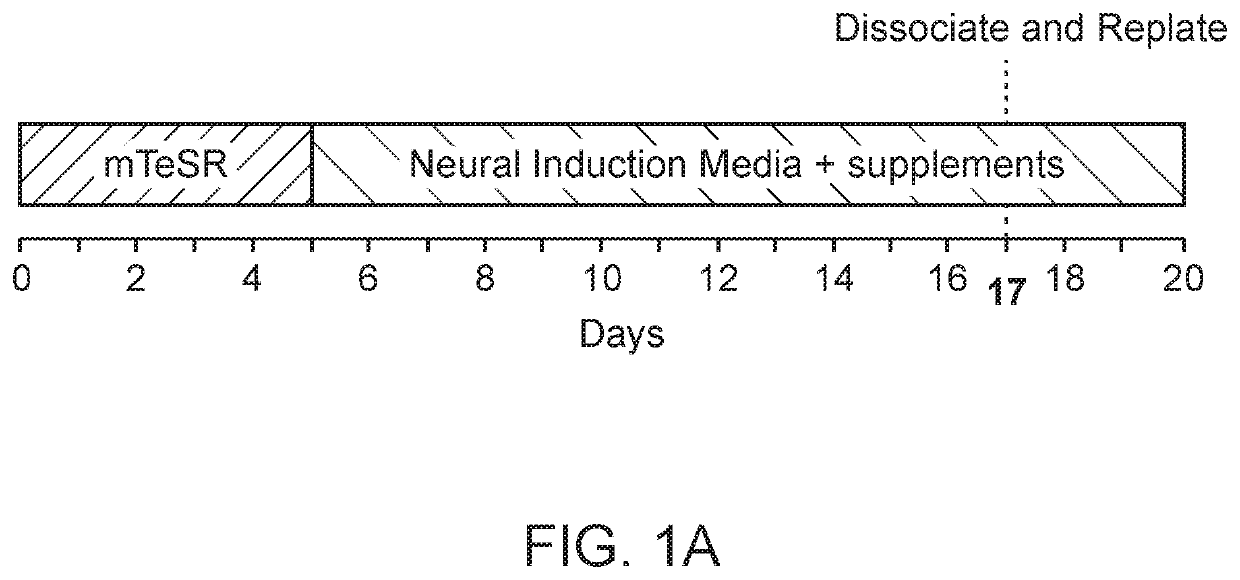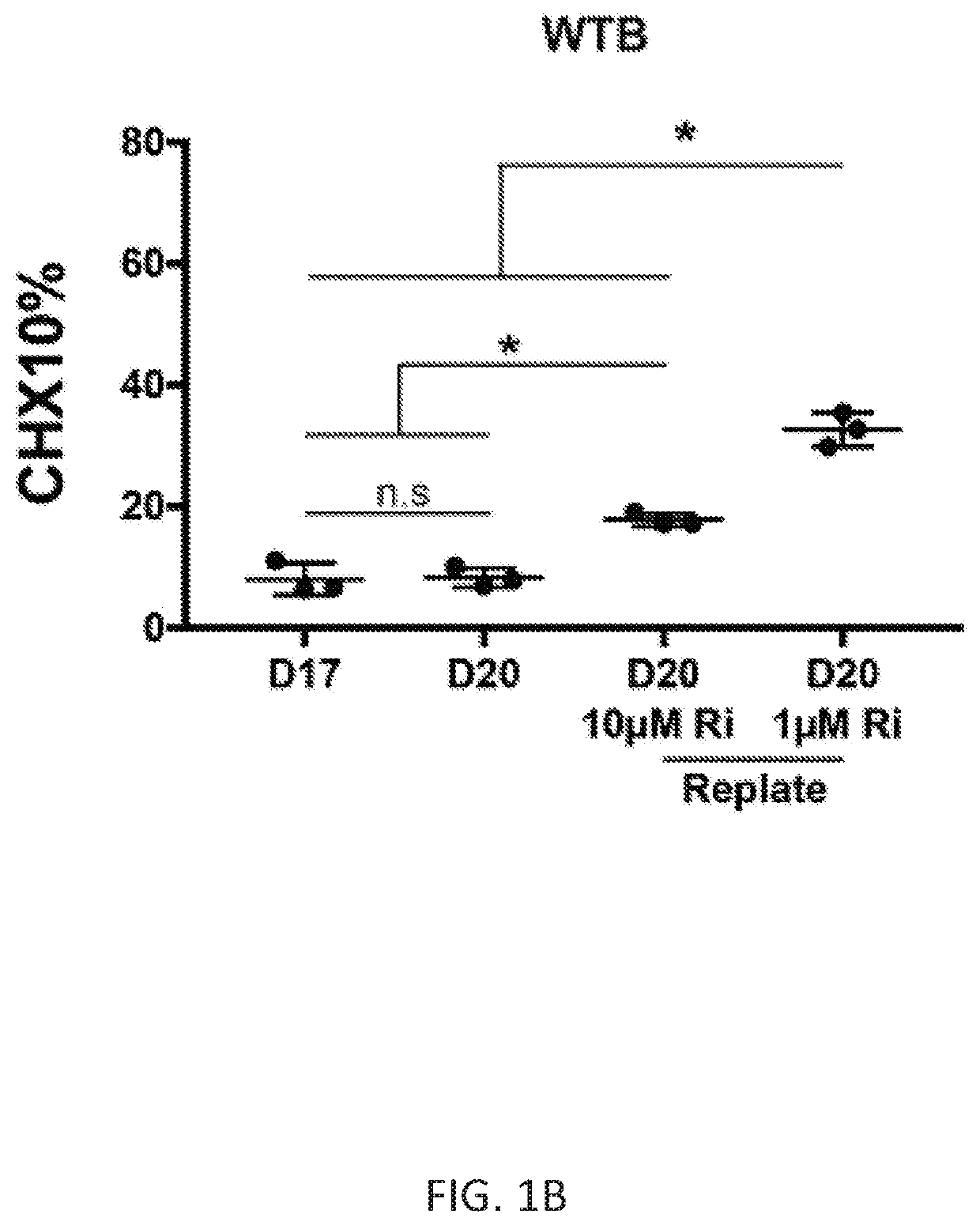Generation of a population of hindbrain cells and hindbrain-like organoids from pluripotent stem cells
a technology of pluripotent stem cells and organoids, which is applied in the direction of metal/metal-oxide/metal-hydroxide catalysts, hydrocarbon preparation catalysts, physical/chemical process catalysts, etc., can solve the problems of no in vitro sources to study the development of hindbrains and neuronal functional interactions
- Summary
- Abstract
- Description
- Claims
- Application Information
AI Technical Summary
Benefits of technology
Problems solved by technology
Method used
Image
Examples
example 1
nce of Respiratory Hindbrain Populations
Introduction
[0152]V2a interneurons can be induced from human pluripotent stem cells (Butts, McCreedy et al. 2017), however, the rostral-caudal identity and function of hPSC-derived V2a interneurons remains to be determined. Additionally, differentiation of V2a interneurons from hPSCs resulted in a heterogeneous population of cells including broad classes of committed neurons, neural progenitors, and glial populations. The specific neuronal cell types in the CHX10− fraction of the cultures have not been identified. The following study demonstrates that hPSC-derived V2a interneurons have a phenotype similar to endogenous V2a interneurons present in the medial reticular formation (mRF) of the hindbrain, which are involved in respiratory control. Additionally, other hindbrain populations have been identified in the heterogeneous hPSC-derived culture including chemosensing neurons and V0 interneurons, which are also critical to the control of respi...
example 2
n of Respiratory Hindbrain Organoids
Introduction
[0198]In Example 1, a monolayer culture system was described wherein multiple respiratory populations that typically arise in the hindbrain including V2a and V0 interneurons as well as a chemosensing population co-emerged. These populations work in tandem to control respiration in vivo. Monolayer cultures provide a platform to test culture conditions in a high-throughput manor, however, cell-cell interactions are limited. Therefore, we wanted to observe how these populations would organize and mature in a three-dimensional (3D) system where cell interactions are less constrained. The following study describes the formation of hindbrain organoids and evaluates the changes in morphology and cell-type specific markers during the induction and maturation processes. The organoids display synchronous activity as they mature similar to what has been reported from native respiratory structures. This study provides the first report of a hindbra...
PUM
| Property | Measurement | Unit |
|---|---|---|
| diameter | aaaaa | aaaaa |
| diameter | aaaaa | aaaaa |
| temperature | aaaaa | aaaaa |
Abstract
Description
Claims
Application Information
 Login to View More
Login to View More - R&D
- Intellectual Property
- Life Sciences
- Materials
- Tech Scout
- Unparalleled Data Quality
- Higher Quality Content
- 60% Fewer Hallucinations
Browse by: Latest US Patents, China's latest patents, Technical Efficacy Thesaurus, Application Domain, Technology Topic, Popular Technical Reports.
© 2025 PatSnap. All rights reserved.Legal|Privacy policy|Modern Slavery Act Transparency Statement|Sitemap|About US| Contact US: help@patsnap.com



